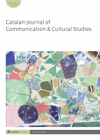
Full text loading...
 , Karen Tatiana Pinto-Garzón1
, Karen Tatiana Pinto-Garzón1 , Úrsula Freundt-Thurne2
, Úrsula Freundt-Thurne2 , Narcisa Jessenia Medranda-Morales3
, Narcisa Jessenia Medranda-Morales3
Interactivity is among the main characteristics of online journalism because it helps to build bridges between the media, journalists and the users to whom the news is directed. This article, based on in-depth interviews with 35 journalists, examines the concept of interaction as understood by media sources in Colombia, Peru and Ecuador. These three countries are culturally and historically similar and have similar levels of Internet access. Most of the journalists indicated that they have adjusted their practice to incorporate some aspects of Internet-based interaction, such as social network presence and increased transparency to users. However, the media organizations for which they work have adopted few such procedures and maintain limited capacity to manage online participation. The journalists expressed their desire for the development of further ways to facilitate interaction with users.

Article metrics loading...

Full text loading...
References


Data & Media loading...

Publication Date:
https://doi.org/10.1386/cjcs_00016_1 Published content will be available immediately after check-out or when it is released in case of a pre-order. Please make sure to be logged in to see all available purchase options.